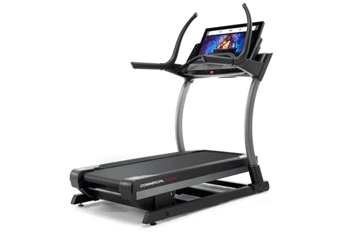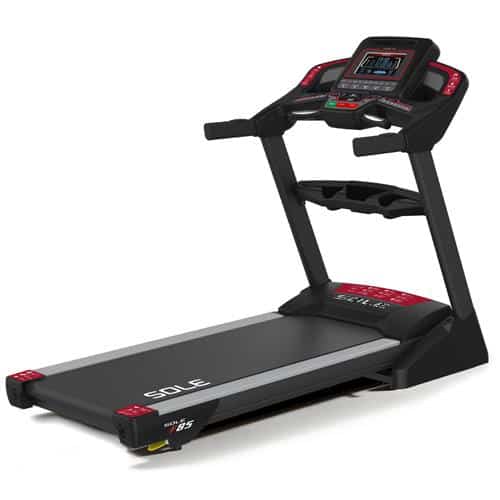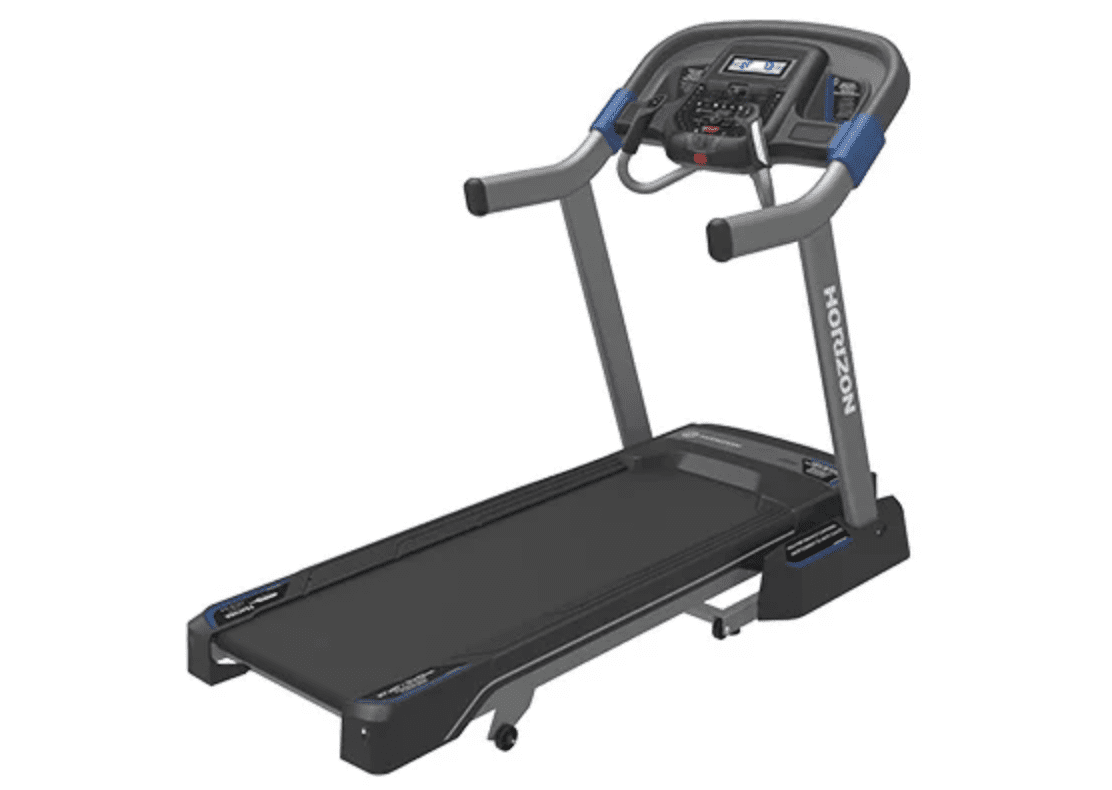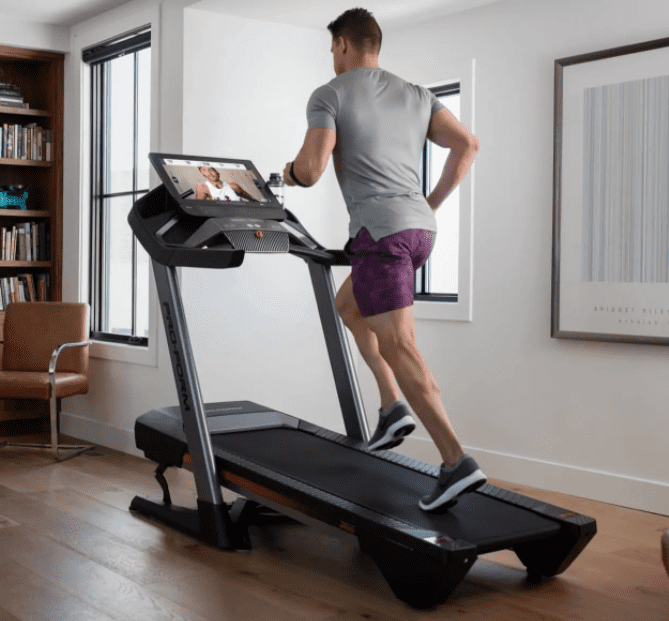 Last Updated on: June 17, 2022
Last Updated on: June 17, 2022
Todd is an active and adventurous person who loves to spend time outdoors – he’s done too many half-marathons to count, he’s hiked Mount Shasta, and he’s backpacked almost every single trail in Yosemite National Park (that’s over 750 miles of trails!). So, when his friends got the news that Todd was suddenly in the hospital for back surgery – they were shocked.
He told his friends that he was out running one morning – just like any normal morning – when all of a sudden, he started to feel some pain in his back. He finished his run and went back home, but the pain wouldn’t go away. Even though he tried to tough it out and go about his normal activities, the pain in his lower back got so bad that he couldn’t even use the bathroom.
His wife finally convinced him to go to the hospital to see what was wrong. After a few different exams and an MRI, they discovered that Todd had 6 discs in his lower back that were all smashed – and one was pinching a nerve, causing extreme pain. The only solution was surgery.
Todd was devastated. Although the surgery went well, considering how bad his back was, the doctors still told him that it would be a very long recovery. Would he ever be able to run again? Would he someday be able to backpack – would his dream of backpacking every trail in Yosemite come true? Or was it all impossible now?
Table of Contents
An Athlete’s Worst Nightmare
Injuries are every athlete’s worse nightmare. The thought of not being able to do the things you love – whether that’s running, playing sports, or simply exercising – is a horrifying thing. But, very often injuries are extremely common – and many times the only solutions are to rest and to give your body time to recover.
Since running has become such a popular exercise, running injuries are more and more common. One recent study about running injuries showed that “more than 80 percent of running injuries are caused by repetitive stress” (1). If you are an avid runner, it’s likely you’ve experienced or will experience a running injury. But there are many things you can do to prevent these pains from happening and to speed up your recovery time if you do get injured.
We’ve compiled a list of ten common running injuries – you’ll find common causes for each injury, prevention tips, and possible solutions if you do have this type of injury.
#1 Achilles Tendinitis

Achilles tendinitis can occur because of overuse – if you are suddenly running or exercising more than usual, and due to repetitive strains on the tendon – usually from running. In fact, Achilles tendinitis is one of the most common injuries runners can face. It’s especially common in runners who have recently started a new training plan or have started preparing for a long-distance race, as this injury often happens when runners suddenly increase the distance or intensity of their runs. It’s also a very common injury for middle-aged weekend warriors.
Usually, the pain from Achilles tendinitis will start as a mild ache in the back of your leg, above your heel. You’ll probably feel it right after getting back from a run or doing a strenuous repetitive activity like sprinting, hill running, or stair climbing. It’s not typically an intense excruciating pain, but rather a tenderness or stiffness. However, if the pain is severe or if you keep running on a hurt Achilles tendon, you could tear the tendon – leading to a much more serious injury.
You can prevent this common injury by slowly easing into a new training regimen, rather than suddenly jumping in and drastically changing your exercise habits. This will allow your muscles time to adjust and slowly build up strength. Stretching and doing exercises that strengthen your calf muscles are also practical tips that can help you avoid this injury.
Another way you can protect yourself from injury is by having a reliable and supportive pair of running shoes. It’s very important to choose your shoes carefully, especially if you have experienced injuries in the past. The Mayo Clinic suggests that the shoes you wear while running or exercising “should provide adequate cushioning for your heel and should have a firm arch support to help reduce the tension in the Achilles tendon” (2). A good pair of running shoes can really make all the difference when it comes to injuries.
#2 Shin Splints
Shin splints are another common running injury that can happen because of overexercise and overuse. Where you run and how you run can also lead to shin splints. If you constantly run on hard or uneven terrain – like hills or concrete – you could be more at risk for shin splints.
Usually, shin splints go away pretty quickly. After a strenuous run, you might notice soreness, tenderness or pain along the inside of your lower leg, along your shin. There might even be a little bit of swelling. However, if you rest your legs and ice the areas that hurt, shin splints normally go away pretty fast. Do be careful jumping back into your exercise routine after you’ve had an injury – it’s always better to slowly get back to your normal intensity to prevent further injuries.
Sometimes shin splints are caused by poor running form. Running is a high-impact activity, but if you use proper running techniques, you can run more efficiently and minimize the impact on your bones and joints. There are two specific running form malfunctions that can lead to shin splints and other injuries – heel striking and dorsiflexing.
Heel striking is when your heel is the first thing to hit the pavement in your running stride. This is super high impact and often is the culprit of many foot and leg injuries. When running, you want to have a balanced running position, and the first part of your foot to touch the ground should be your midfoot, or the balls of your feet. This area has more padding and absorbs impact much better than your heels or your toes.
Dorsiflexing is the other problem that many runners encounter. Basically, this occurs when you contract your shin muscles and pull your toes towards your shin just before landing in your stride. This leads to landing on your heel and also puts a lot of strain and pressure on your shin muscles (3). You might not even know you’re doing this as you run. But, if you are constantly finding yourself with different leg injuries and ailments, you might want to sign up for a formal analysis of your running technique. Running coaches can quickly identify problems in your technique and offer suggestions that will save you from more injuries down the road.
#3 Lower Back Pain
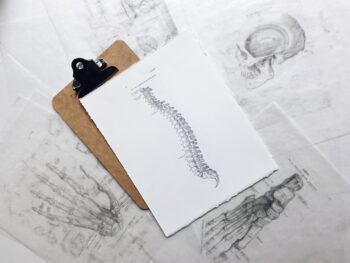
In fact, looking a running as only a “leg” exercise can cause you to stop strengthening other parts of your body – like your core and back – that are also essential for running, but often forgotten about. Having strong back muscles can give you more control and stability while running, making your run easier and more enjoyable.
However, many runners have strong leg muscles, but weak back and abdominal muscles. This makes your lower back vulnerable and unable to provide the support necessary for your body to run efficiently. That means that as you get to the end of your run and your muscles get tired, your back muscles won’t be able to control your movement – creating a stress on your spine that causes back pain (4).
The long-term solution for lower back pain in runners is slowly building up your abdominal and back strength. Focusing on running as a whole-body activity will not only improve your running technique and speed, but it will also protect your body from long-term damage.
But, as everyone knows, building muscles doesn’t happen overnight, so while you are slowly strengthening your core and back, add stretching and yoga exercises to your running routine. Spending time stretching your hips and butt can take pressure off your spine and be just what your body needs after a long run.
#4 Hamstring Injuries
This type of injury most often occurs in sports like basketball, soccer, and tennis that have sprinting combined with sudden starts and stops. These sudden intense movements can cause you to strain or pull one of your hamstring muscles – the three long strips of muscle that make up the back of your thigh.
Although hamstring injuries are less common in distance runners, if you incorporate sprint exercises into your running regimen, you might encounter hamstring soreness or injury. According to the Mayo Clinic, “a hamstring injury typically causes a sudden, sharp pain in the back of your thigh. You might also feel a “popping” or tearing sensation” (5). Usually, with rest and ice, you can treat your hamstring injury at home. But, if you are experiencing very intense pain or can’t walk more than four steps without significant pain, you should see a doctor.
The main cause of hamstring problems is poor flexibility. Your hamstring muscles are what allow you to bend your knee and move your leg, extending it straight behind your body. The more flexible your hamstring muscles are, the more mobility and agility you have in your leg. When your hamstring muscles move or stretch beyond their limit during exercise, that’s when the strain or injury occurs.
That’s why it’s super important to always get in a good dynamic stretching warm-up before going on a run, and to make sure you do cool-down stretching afterwards. While it does take a few minutes, it can save you weeks of recovery in the long term.
Some of the best exercises and stretches for your hamstrings are Romanian deadlifts, glute bridges, lunges, the classic hurdler stretch, and toe touches. If you can reach down and touch your toes without feeling uncomfortable, your hamstrings are likely pretty flexible.
#5 Sprained Ankles
A sprained ankle injury can happen when you land incorrectly after jumping or running, when you roll your ankle after a clumsy misstep, or when you twist your ankle in any awkward and unnatural way. When you do any of these movements, the ligaments in your ankle can stretch beyond their limit and tear, causing pain, a popping sound, swelling, bruising, and tenderness.
A very common injury, sprained ankles usually happen during sports, since uneven terrain like soccer or football fields can lead to missteps or uneven foot placement that can cause injuries. They are also a common injury in trail runners, because of the rough, irregular terrain.
To prevent sprained ankles, try to run on even surfaces without unexpected dips or cracks in the cement that could cause you to lose your balance or trip. Having a good pair of running shoes is also essential. If your shoes don’t fit properly, you put yourself at risk of greater injury.
Studies show that increasing your balance and specifically doing balance training exercises also reduces the risk of sprained ankles. One study showed that athletes that participated in exercises like one-legged throwing, catching and dribbling exercises, using a balance board, and doing certain exercises with their eyes closed “reduced the rate of ankle sprains by 38%” (6).
Not only can increasing your balance reduce your risk of injury, it can also improve your running technique and performance. You can buy a balance board for $25-$50 dollars online and add it to your workout routine a couple times a week to increase your balance and protect yourself from injury.
#6 Plantar Fasciitis
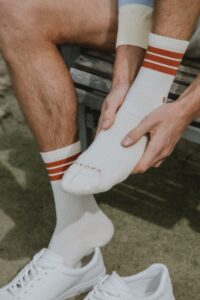
Plantar fasciitis happens when the tension or stress on this foot tissue becomes too much – causing the tissue to tear a little bit in different spots. These tears can lead to irritation or inflammation of the fascia, leading to a stabbing pain in the bottom of your foot. With plantar fasciitis, the pain is usually worse in the morning, after long periods of standing, or after exercise.
Sometimes, plantar fasciitis can happen without any apparent causes, but most of the time, it happens because of overuse or excess stress on the tissue. For example, being on your feet all day, especially walking or standing on hard surfaces, can lead to plantar fasciitis. Since running is an activity that puts a lot of stress on your heel, it can also contribute to this injury. Anything that puts excess stress on this part of your body can result in plantar fasciitis.
To prevent plantar fasciitis, having a supportive pair of shoes is extremely important. You should also know what type of feet you have. Depending on whether you have low arches, flat feet, or high arches, there might be certain types of running shoe brands or sole inserts that would be better able to protect your feet from injury.
#7 IT Band Syndrome
If you have a sharp pain on the outside of your leg above your knee you might have IT band syndrome. Your IT band, or iliotibial band, is a strong, thick band of connective tissues that runs all the way along your outer thigh – from the outside of your hip to the top of your shin bone. The IT band helps to stabilize your knee while you move or exercise.
However, activities like running, cycling, walking, stair-climbing, and hiking – all activities where you bend your knee very frequently – can cause your IT band to become tight, leading to swelling and pain around the knee area. This knee pain happens because of friction in the area where the IT band crosses over the kneecap.
There are a few things you can do to prevent IT band syndrome. First of all, get rid of your worn-out running shoes. If your shoes don’t have enough support, it makes running even more strenuous for your joints and can cause problems like IT band syndrome.
Second, try to minimize running downhill for long periods of time. When you run downhill, your feet tend to smack the pavement harder than usual, creating more stress on your joints and tendons – and especially on your knees. Running uphill is a better workout anyway!
And third, avoid always running on the same side of the road. This might sound like a weird suggestion, especially since most runners tend to be creatures of habit, always running the same routes on the same days. However, there is logic behind this… since roads typically slope towards the curb, always running on the same side of the road actually throws off your balance, because your outside foot is lower than your inside foot. This imbalance tilts your hips and can lead to unnecessary stress on your IT band on your inside leg (8).
It’s also a great idea to incorporate specific IT band stretches into your warmups and cool downs if you’ve experienced this injury in the past. Some of the best stretches for IT bands are: side lying leg raises, foam roller stretches for your IT band, and toe touch with crossed legs.
#8 Runner’s Knee
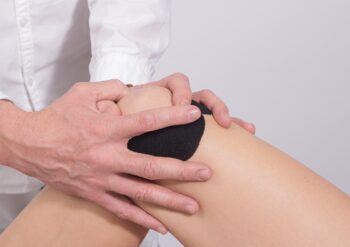
According to health experts, this pain is caused by “irritation of the soft tissues or lining of the knee, worn or torn cartilage, or strained tendons.” (9) If you experience knee pain, the best solution is RICE – rest, ice, compression, and elevation. This will decrease the swelling and reduce the pain. Compression wraps or KT tape can also be especially helpful for knee injuries, decreasing pain when you walk or move.
Knee pain can happen if you are running more than usual and not giving your body adequate time to rest and recover, or if you don’t do a proper warm-up or stretch enough before exercise. If you have flat feet, that could also contribute to your knee pain. Another likely cause for knee pain is having weak quad muscles. Since the knee and quad muscles are so intricately connected, having weak quadriceps can put you at risk for greater knee pain.
To avoid runner’s knee, you can focus on strengthening your leg muscles – having strong leg muscles will give your knee more stability while you run. Always remember to stretch your knees before going on a run – this will loosen up your muscles and ligaments and prepare your body for exercise.
Cross-training is another great way to prevent injuries – especially knee injuries. Vary your exercise routine by adding lower-impact exercises like swimming, yoga, or cycling. This will give your knees a break from the intense pounding of running and also strengthen other leg muscles, protecting your knee and your body from other injuries as well.
#9 Metatarsalgia
Metatarsalgia happens when the ball of your foot becomes enflamed, causing a sharp pain – or sometimes a burning or aching pain – in the part of the sole of your foot right behind your toes. Usually, the pain will get worse when you stand, walk or run, especially barefoot. You might even feel like you have a pebble in your shoe.
The solution for metatarsalgia is rest – try to stay off your feet and ice the area where the pain is coming from. Since this injury stems from inflammation of the metatarsals (the long bones in your feet) ice will help to decrease the inflammation and make the pain subside. If the pain doesn’t get better after a few days, talk to your doctor, as it could turn into a bigger problem.
There are several factors that can lead to this type of foot injury. First, having the wrong pair of shoes. Running in shoes that are too tight or too loose, especially shoes that are narrow in the toe area, can cause this type of inflammation. For that reason, “wearing proper footwear with shock-absorbing insoles or arch supports might prevent or minimize future problems with metatarsalgia” (10).
Another factor that can lead to metatarsalgia is your foot shape. If you have a high arch, your foot shape puts pressure on your metatarsals, which can lead to inflammation if you overexercise or do intense training activities.
This foot injury is one that is common in runners, but you can prevent it by wearing a well-fitting pair of shoes and sole inserts that match your foot shape to decrease the amount of impact the sole of your foot absorbs.
#10 Stress Fracture
When you’re on a long run and your muscles get tired, they become less able to absorb the shock of running. Unable to deal with the overload of stress, your muscles transfer the weight to your bone, which can cause a tiny crack in the bone, called a stress fracture.
Usually, stress fractures occur in the metatarsals – the long, thin bones in your feet. But they can also occur in your heels, ankles, or the middle of your foot. You’ll know if you have a stress fracture if you feel a sharp pain in a specific area that prevents you from moving normally. If you can pinpoint the pain to a bony area in your foot and notice swelling, it’s probably a stress fracture.
Stress fractures usually develop over time – each time you go on a run, you put stress on your bones, and if you don’t allow enough time for rest in between your workouts, your bones can become damaged in specific areas. Your bone strength and bone density can also affect your likelihood of experiencing a stress fracture. If you have a low BMI or a condition like osteoporosis, high-stress activities like running could put you at risk of a stress fracture.
One recent study revealed that “low levels of vitamin D may increase the risk of stress fractures, and suggested that active individuals may need high levels of it than the general population” (11). To keep your bones healthy and strong, be sure to get the right amount of Vitamin D every day by eating foods like red meat, egg yolks, fish, and drinking milk.
Since a stress fracture is a more serious type of running injury, if you suspect you might have one, it’s best to contact your doctor immediately. You will probably need an X-ray or MRI to find the exact location of the fracture and what the next steps are. In some cases, surgery is needed to fix the fracture.
Simple Steps to Protect Your Body from Injury Today
Most of the injuries mentioned above are a result of overtraining or suddenly and drastically changing your exercise plan. If your body is used to running 3 miles a couple of times a week, but you suddenly decide to jump into an advanced marathon training plan and abruptly start doing 10+ mile runs, your body won’t be prepared for all the additional stress. You’ll be putting your body under a more strenuous load and the added stress can cause injuries to occur.

Always remember to give yourself enough time to rest between more intense workouts. “No days off” might seem like a hard-core motto, but it’s certainly not good for your body. Rest is essential for building muscle, stamina, and endurance, and skipping rest days might work for a little while, but eventually your body will burn out – and you’ll pay for it in injuries later. It’s better to take a few days off every week rather than to have to take weeks (or months) off recovering from a preventable injury.
Coming Back from an Injury
Remember Todd? Well, after his back surgery, he was really disappointed. He had spent his whole life running, playing soccer, hiking, and backpacking – and now, he might never be able to do any of those things again. His doctors told him that he would have a long recovery ahead of him, but that he would be able to walk again. As for the other activities, well, only time would tell.
But Todd didn’t like that answer. He was determined to be able to do what he loved again. So little by little, he started walking, then hiking, then backpacking again. At first, he could only walk to the mailbox and back on his street. But every day he was able to go a little bit further, and with much less pain.
This summer, Todd and his friends went to Yosemite National Park to hike one of the last few trails that he’s yet to cross off his list of trails. His friends were a little worried. Even though Todd had bought a super lightweight backpack and packed only the absolute necessities, they were going for 3 days, and they were going to do an 11-mile hike – with a huge elevation gain.
But, just like old times, Todd took the lead. It was his friends who were struggling and trailing behind him, not the other way around. Todd has made truly miraculous progress in his recovery – and although he says that it’s hard to not be able to do as much as he used to do, he’s grateful for what he can do. And he’s learned an important lesson – to listen to his body.
Before, Todd was definitely the person who pushed himself beyond his limit. Yes, to achieve amazing feats that impressed everyone, but at a price. All those years of pushing through the pain caught up to him – like they catch up to everyone. Now, Todd knows that it’s more important to listen to your body, to stop when it hurts, and to rest and recover.
When you listen to your body and give it the rest that it needs, you’ll be able to keep doing what you love – whether that’s running, hiking, exercising, or backpacking – for a long, long time.
This article was written by Rachael Kraft and published on Tuesday, 23 November 2021. It was last updated on Friday, 25 March 2022.
Sources:
- Common Running Injuries
- How to Prevent Achilles Tendonitis
- Improve Your Running Technique to Avoid Shin Splints
- Lower Back Pain from Running
- How to Avoid Hamstring Injuries
- Balance Training Program and Ankle Sprains Study
- Plantar fasciitis
- What Is Iliotibial Band Syndrome?
- Runner’s Knee
- Metatarsalgia
- What Causes Stress Fractures?

